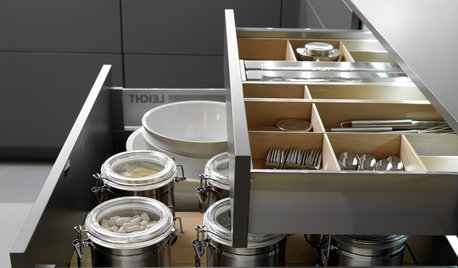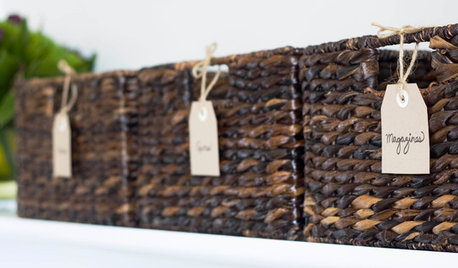cost of organic
hogan_nj
15 years ago
Related Stories

DECORATING GUIDESHow to Work With a Professional Organizer
An organizing pro can help you get your house together. Here's how to choose the right one and gain your own clutter-clearing skills
Full Story
ORGANIZINGGet the Organizing Help You Need (Finally!)
Imagine having your closet whipped into shape by someone else. That’s the power of working with a pro
Full Story
ORGANIZINGOrganizing Secrets: It’s the Little Things
Get these 8 small areas under control for a major boost in overall tidiness at home
Full Story
ORGANIZING21 Tips for Organizing Your Stuff
Restore order at home with these ideas for tidying up cupboards, shelves, doors and more
Full Story
ORGANIZINGGet Organized: Are You a Piler or a Filer?
Tote out the bins and baskets and learn how to be an organized piler if file cabinets leave you cringing
Full Story
MOST POPULAROrganizing? Don’t Forget the Essential First Step
Simplify the process of getting your home in order by taking it one step at a time. Here’s how to get on the right path
Full Story
HOUSEKEEPING7-Day Plan: Get a Spotless, Beautifully Organized Garage
Stop fearing that dirty dumping ground and start using it as the streamlined garage you’ve been wanting
Full Story
ORGANIZINGSmall Steps to Organizing Success
Take care of bite-size projects, and your home's big picture will be an organized dream before you know it
Full Story
ORGANIZING10 Principles of Organizing That Work in Every Room
Use these ideas to make it easier to find and put away your things
Full Story
ORGANIZINGYour Total Home Organizing and Decluttering Guide
Take it slow or be a speed demon — this room-by-room approach to organizing and storage will get your home in shape no matter how you roll
Full StorySponsored






okcdan
billhill
Related Professionals
Lowell Landscape Architects & Landscape Designers · Signal Hill Landscape Architects & Landscape Designers · Aurora Landscape Contractors · Fairfield Landscape Contractors · Federal Way Landscape Contractors · Fort Atkinson Landscape Contractors · Siloam Springs Landscape Contractors · San Juan Capistrano Swimming Pool Builders · Carlsbad Fence Contractors · Cockeysville Fence Contractors · Memphis Fence Contractors · New Haven Fence Contractors · Olive Branch Fence Contractors · Park Ridge Fence Contractors · Troutdale Fence Contractorshogan_njOriginal Author
kmnhiramga
bpgreen
Kimmsr
dchall_san_antonio
beta1097
Kimmsr
bpgreen
skizot
dchall_san_antonio
skizot
dchall_san_antonio
skizot
skizot
dchall_san_antonio
Kimmsr